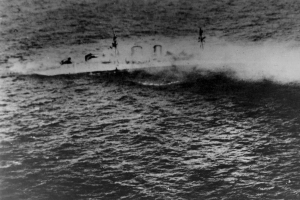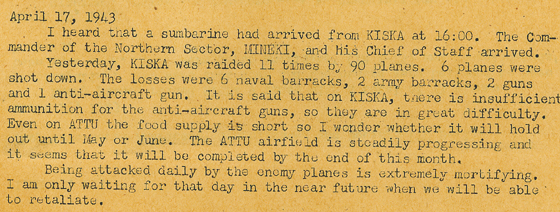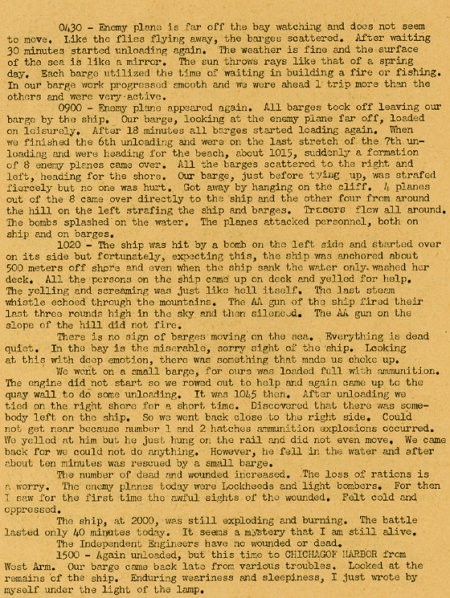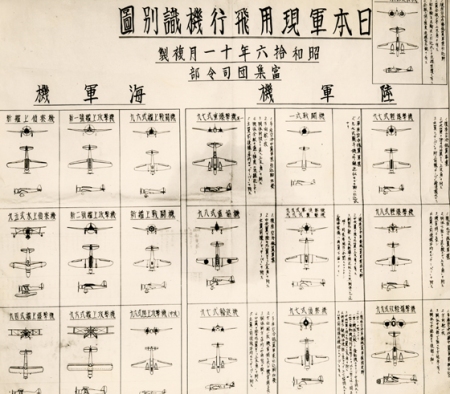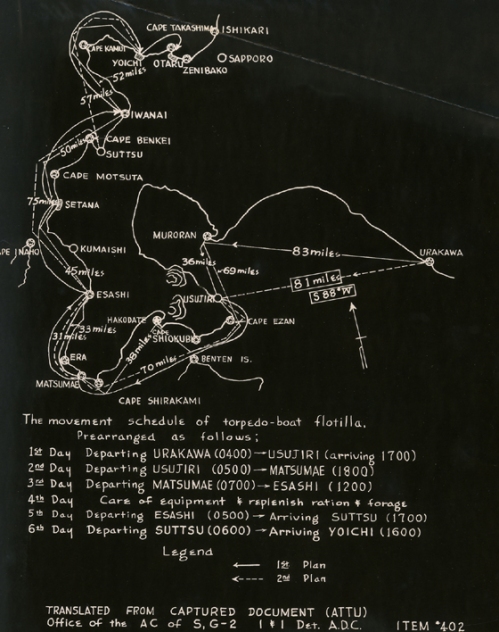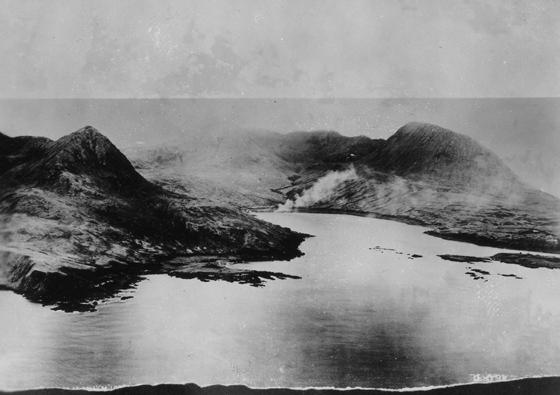 Following the capture of Attu Island in the Aleutians at the end of May 1943, the 7th Infantry Division discovered a treasure trove of documents, diaries, letters, photographs and film among the items captured during the campaign. Some of the only film sequences we have in the West of the Japanese carrier force came from footage found on Attu. Stills were taken from the footage, which included the final moments of the HMS Exeter and HMS Cornwall, two Royal Navy heavy cruisers sunk by Japanese carrier aircraft in the Dutch East Indies and the Indian Ocean in the spring of 1942.
Following the capture of Attu Island in the Aleutians at the end of May 1943, the 7th Infantry Division discovered a treasure trove of documents, diaries, letters, photographs and film among the items captured during the campaign. Some of the only film sequences we have in the West of the Japanese carrier force came from footage found on Attu. Stills were taken from the footage, which included the final moments of the HMS Exeter and HMS Cornwall, two Royal Navy heavy cruisers sunk by Japanese carrier aircraft in the Dutch East Indies and the Indian Ocean in the spring of 1942.
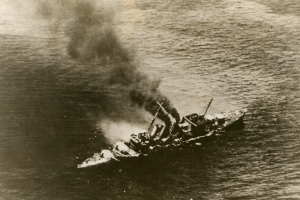
HMS Cornwall sinking after being dive bombed by Japanese carrier aircraft during the Indian Ocean Raid in the spring of 1942.
The letters, diaries and documents provided insight into the experience of the Japanese Soldier and Sailor, and showed a streak of fatalism as they realized the hopelessness of their situation in the Aleutians. The material was translated by U.S. Navy and Army intelligence units, and some of those translations have survived at the National Archives in College Park, Maryland.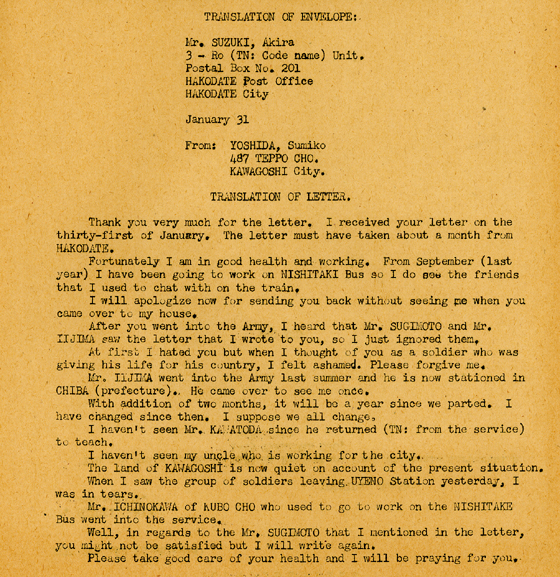
On Attu, considerable weaponry, equipment and even wrecked float planes fell in American hands. The gear helped give the U.S. Army greater insight into the organization and capabilities of the Japanese military, information that was put to good use later in the war.
The information gathered on Attu, along with similar intel gleaned from the Solomons and New Guinea, was compiled into a technical manual on the Imperial Japanese Army that covered everything from weapons employed, artillery tactics and infantry TOE’s to what typical bunkers and fortifications looked like. The manual was widely distributed during the war, and has subsequently been reprinted.
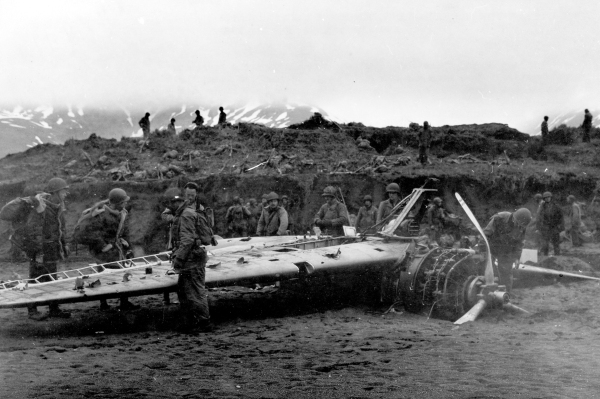
Soldiers of the 7th Infantry Division examine a wrecked Nakajima “Rufe” float plane fighter captured on Attu.
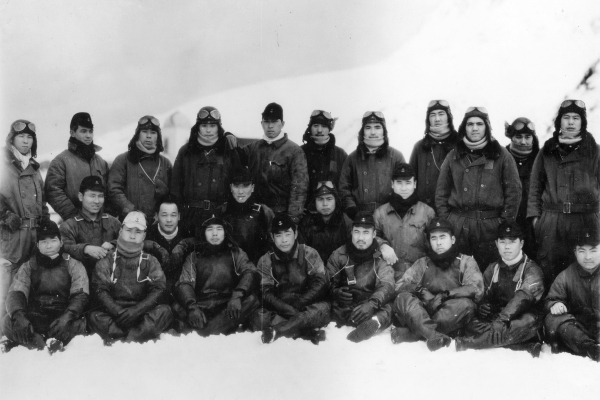
The pilots of a Japanese float plane squadron based on Attu. The photo was part of the intel trove captured on the island.
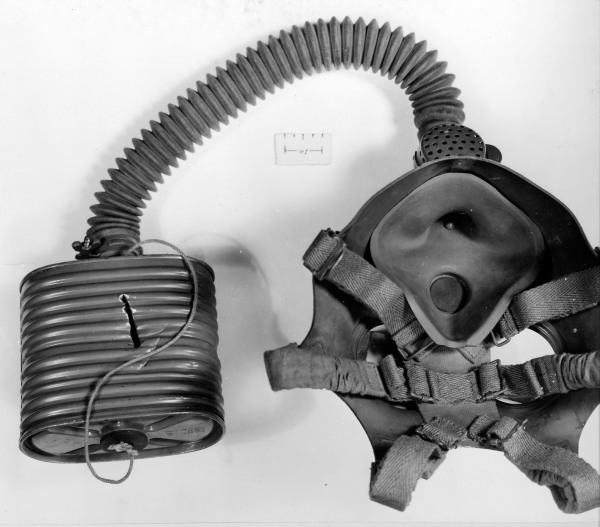
A Japanese gas mask found on Attu attracted the interest of U.S. intelligence. It was taken to Adak, examined and photographed only a few days after its capture in May of 1943.
See the U.S. intel teams in action in this short film clip:

